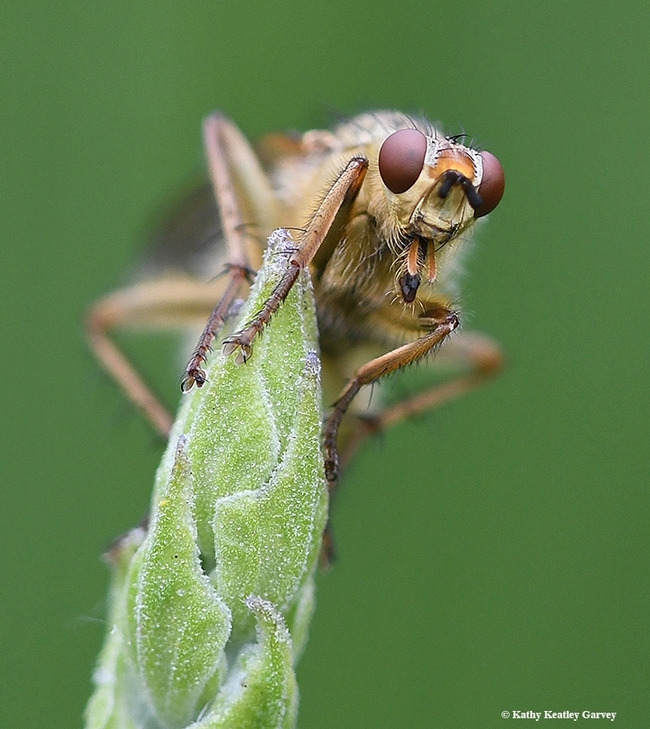Thar's gold in them thar hills, and then there's that ol' golden dung fly, Scathophaga stercoraria.
It's a red-eyed blond that definitely demands your attention.
You can find the larvae--if you're looking for it and know where to look--in the feces of large animals, including horses, cattle, sheep, deer and wild boar, where the insect breeds. The larvae eat the dung, and that's why this insect is important to natural decomposition. One of nature's recyclers...
The adult is a predator; it hunts for flies and other small insects. The adults also sip nectar, just like honey bees and other pollinators. BugGuide.net provides more information on the golden dung fly.
Carl Linnaeus first described the insect in 1758 as Musca stercoraria, according to BugGuide.net. Cathophaga originates from the Greek word, "skatos," meaning "excrement" and "phagein" for "to eat." Stercoraria is derived from the Latin "stercoris," meaning "of dung."
So, Happy Friday Fly Day--from a Golden Goddess...of sorts.
Attached Images:
